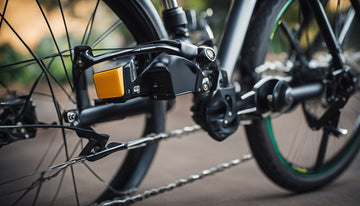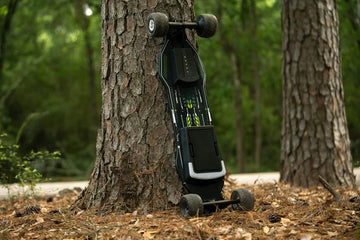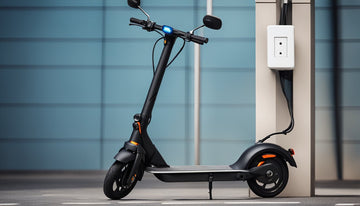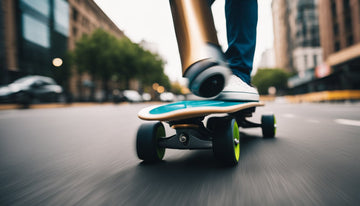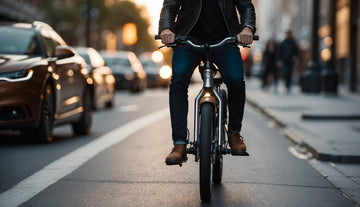
Hop on a fast electric bike and watch the world zip by with ease. E-bikes are super handy for zipping around quickly and smoothly. They whisk you away to your destination with peppy motors, batteries that last, and by sticking to the e-bike speed rules of where you live.
The U.S. sorts electric bicycles into three main types. Class 1 electric bikes help you go faster, up to 20 mph, which is just right for everyday trips around town. Class 2 e-bikes can also go up to 20 mph and has a cool button that moves the bike for you, no pedaling needed. And if you're looking to speed up your ride, Class 3 bikes push the limit speed of 28 mph, perfect for when you've got a bit farther to go.
Finding the right e-bike is all about how quick you want to travel and keeping it within the rules. No matter if you're into leisurely rides or hustling to work, there's an e-bike that fits the bill. Eager to see how fast a bike can go? Read on to learn more.
Understanding E-Bike Power
When considering an electric bike, your experience is largely determined by two core components: the motor and the battery. Knowing how they work together will help you understand an e-bike's capability.
Exploring Wattage and Motor Power
The power of an electric bike's motor is measured in watts (W). This measurement indicates how much power the electric motor consumes and often correlates to the bike's ability to accelerate and handle inclines.
Motor Type:
- Hub motors are common in many e-bikes and are either integrated into the front or rear wheel.
- Mid-drive motors are positioned centrally and provide a balanced ride by driving the crank, rather than the wheel.
E-bikes typically vary in motor power from 250 watts to powerful models with up to 750 watts or higher. A 750-watt motor power is quite robust, allowing you to climb steeper hills and accelerate faster compared to e-bikes with less wattage.
Battery Essentials: Capacity and Range
The battery is the e-bike's powerhouse, storing the electricity that runs the motor. Its performance is primarily defined by battery capacity, which is labeled in watt-hours (Wh).
Key Battery Specs:
- Battery Capacity: It tells you how much power the battery can store and is a significant factor in determining the bike's range on a single charge.
- Battery Power: More than just capacity, it's about how efficiently the bike uses this stored energy.
While watt-hours can give you a general idea of range, the actual distance you can travel on a single charge (range) also depends on:
-
Your weight
-
The terrain
-
Riding style and speed
-
Weather conditions
Understanding the wattage, motor power, and battery capacity will help you select an e-bike that suits your needs for power and distance.
Classification of Electric Bikes and Their Speed Capabilities
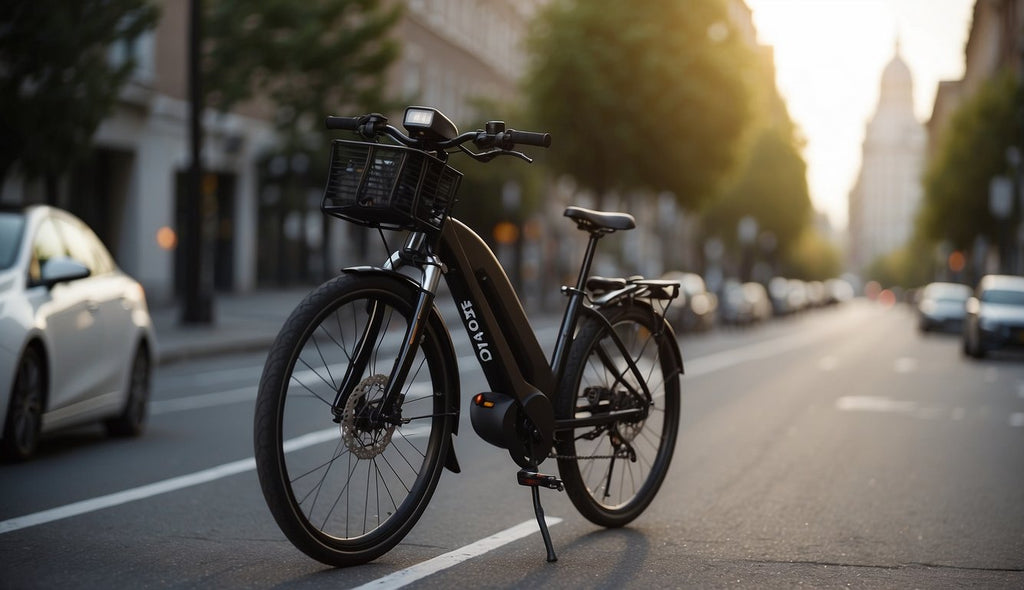
E-bikes have classifications that dictate the maximum speed and assistive features of electric bikes. Class 1, Class 2, and Class 3 e-bikes differ mainly in their top speeds and whether they offer throttle assistance, pedal assistance, or both.
Class 1: Pedal-Assist Basics
Class 1 e-bikes offer pedal assist of up to 20 mph. This means when you pedal, the motor activates to help you maintain speed with less effort. Once you reach 20 mph, the motor assistance will disengage, and any further acceleration will depend entirely on your own pedaling power.
-
Motor assistance: Activates only while pedaling
-
Top speed: Limited to 20 mph
Class 2: Throttle Features
Class 2 electric bikes come equipped with both pedal assistance and throttle capabilities, allowing you to engage the motor without pedaling. Similar to Class 1, the motor assistance is capped at 20 mph for both pedal-assist and throttle.
-
Motor assistance: Available via pedaling or throttle
-
Top speed: Limited to 20 mph with both systems
Class 3: The Speed Pedelec Experience
Class 3 e-bikes, or speed pedelecs, push the boundaries with pedal assistance that extends up to 28 mph. These models typically do not include a throttle and are designed to cater to riders who desire higher speeds.
-
Motor assistance: Pedal-assist only
-
Top speed: Up to 28 mph
-
Note: Throttle may not be available
U.S. Regulations and Limits for E-Bike Speed
E-bike regulations in the United States focus on safe interaction with traffic and pedestrians. Speed limits for e-bikes typically cap at 20 mph for standard use on bike paths and lanes.
However, some models designed for speedier travel are allowed assistance up to 28 mph, though they may have restrictions on where they can be ridden. It's important to check your local laws, as helmet requirements and specific speed rules can vary by state.
International Laws and Variations
In Europe, e-bike regulations can vary but generally, the legal limit for motor assistance is up to 250 watts, and the speed limit where motor assistance must cut off is 25 km/h (15.5 mph). The UK mirrors these restrictions, requiring no registration or insurance for e-bikes complying with these limits.
It’s vital to check the laws specific to the country you're in, as Europe consists of multiple countries with individual legal frameworks applying to e-bikes.
Consequences of Overstepping Legal Boundaries
Exceeding the legal speed limit or using a motor more powerful than the legal limit on your e-bike can lead to similar consequences as those for motor vehicles, such as fines or the requirement for proper registration. Furthermore, modifying your e-bike to surpass the stated limits can invalidate your warranty and potentially lead to denied insurance claims.
Factors Affecting the Performance of an E-Bikes
Electric bike performance varies based on several factors that directly influence speed. Understanding how these elements interplay can help you optimize your e-bike experience.
Influence of Rider Weight and Skill
The weight of the rider significantly impacts e-bike performance. A heavier weight requires more power to maintain the same speed as a lighter rider, which can result in reduced top speed and quicker battery depletion.
Your skill level also plays a critical role. Skilled riders can navigate more efficiently, making better use of the bike's momentum and energy.
Impact of Terrain and Road Conditions
Terrain and road conditions are critical to any bike's performance and are even more pertinent when it comes to electric bikes.
-
Off-Road Trails: Challenging surfaces like off-road trails demand more power to traverse and can decrease an e-bike's speed.
-
City Streets: Conversely, smooth city streets allow for more constant speeds and less energy spent overcoming resistance.
The Role of Riding Modes
Modern e-bikes come with different riding modes that adjust the level of assistance provided by the motor.
-
Eco Mode: Increases efficiency and battery life but provides less assistance, making it suitable for level terrains or lighter riders.
-
Performance Mode: Offers full assistance, ideal for tough terrain or heavier weight, at the expense of faster battery consumption.
Also read: Protect Your Isinwheel Ebike: 5 Tips for Securing Your Ride
How To Maximize Your Electric Bike's Speed
To achieve the best performance and the highest speeds from your electric bike, focus on regular maintenance and tuning, understanding your bike's battery and power settings, and utilizing the optimal gear for your riding conditions.
Maintenance and Tuning for Peak Efficiency
Maintenance is a crucial element for keeping your e-bike operating at peak efficiency.
Begin by ensuring that your tires are in good condition, as they directly affect your ride quality and top speed.
-
Tire Pressure: Maintain the recommended tire pressure for less rolling resistance.
-
Tire Size: Consider that larger tires may offer a smoother ride, but can impact efficiency.
-
Wheels: Regularly check that your wheels are true (straight), as bent wheels can significantly slow you down.
Other parts to routinely check and maintain include the chain, brakes, and bearings to ensure your e-bike's efficiency is maintained.
Optimizing Battery Use and Power Modes
Your e-bike's battery is the powerhouse that supplements your pedal power.
To maximize speed, utilize your power modes strategically.
-
Power Modes: Higher power modes offer more boost but consume battery life faster. Use them when needed to reach higher speeds.
-
Efficient Use: For longer rides, conserve energy by using lower assist levels and saving higher levels for when you need that extra speed.
Manage the state of your battery by:
-
Regular charging: Avoid letting the battery fully deplete.
-
Storing in a cool, dry place: Extreme temperatures can affect battery life and performance.
The Significance of Gear Settings
The right gear settings can have a significant impact on your e-bike's speed.
By understanding and adjusting your gears, you can maintain efficient pedal power at various speeds.
-
Use a lower gear for quick acceleration and climbing hills.
-
Switch to a higher gear to achieve and maintain top speed on flats or downhill stretches.
Learning to anticipate terrain changes and adjusting your gears accordingly will help in maintaining a fast and efficient riding pace.
Tips for Riding E-Bikes With Speed
Riding an e-bike fast can be exhilarating, but it requires a bit of know-how to stay safe and enjoy the ride. Keep these tips in mind when picking up the pace:
Know Your Route: Before setting off, plan your journey. Choose routes with fewer traffic disruptions and good road quality to maintain a steady, fast pace safely.
Stay Visible: High speeds mean you need to be seen by others quickly. Wear bright clothing, and make sure your e-bike has functioning lights and reflective elements.
Brake Early: Your stopping distance increases at higher speeds. Anticipate stops and give yourself plenty of time to slow down.
Use Gear Wisely: If your e-bike has gears, use them to your advantage. Shift up when you're going faster to maintain a comfortable pedal rhythm without straining the motor.
Battery Management: Fast riding drains the battery quicker. Keep an eye on your battery level and charge it fully before long, speedy rides.
Weather Awareness: Be cautious of wet or slippery surfaces. Traction is reduced at high speeds, and your e-bike may handle differently.
Regular Checks: Perform routine checks on your e-bike's tires, brakes, and battery to ensure it's in top condition and can handle higher speeds.
Follow the Law: Abide by local e-bike speed regulations to stay legal and safe.
Ride Defensively: Be aware of your surroundings and ready to react to others on the road. Assume others might not see you and be prepared to take evasive action.
Safety Gear: Besides a helmet, consider knee and elbow pads for extra protection.
By staying prepared and mindful of these tips, you'll be set for a fun and fast e-bike experience.
Conclusion
Find the perfect e-bike that balances speed with your safety. Whether you prefer a leisurely 20 mph or a brisk 28 mph ride, there’s a model for you. Be mindful of speed limits and safety as you explore your options.
For a top-performance e-bike that delivers an electrifying experience, check out Isinwheel's range. They offer something for every rider, ensuring you can cruise or speed along with confidence.
Get set to power up and embark on a greener, more thrilling journey with Isinwheel.
Frequently Asked Questions
Are electric bikes faster than gas?
Electric bikes generally aren't faster than gas-powered motorcycles or mopeds. The top speeds for e-bikes are usually limited by law, whereas gas-powered vehicles are built for higher performance and can reach higher speeds. However, compared to Isinwheel traditional bicycles, e-bikes provide a significant speed boost, making them a quick and eco-friendly option for city commuting and moderate distances.
Are electric bikes hard to ride?
Electric bikes are not hard to ride; in fact, they make cycling easier. With pedal-assist technology, riders can tackle hills and headwinds with less effort than a traditional bike. Most e-bikes operate similarly to regular bikes, so if you can ride a bicycle, you'll adapt quickly to an e-bike.
Why are e-bikes limited to 20 mph?
E-bikes are limited to 20 mph in many areas to comply with safety regulations and laws that classify them as bicycles rather than motor vehicles. This speed cap ensures they can safely share bike lanes and paths with pedestrians and traditional bicycles. The limit also helps prevent the need for a driver's license, registration, and insurance, keeping e-biking accessible.
Do you need a helmet for an electric bike?
Yes, it's highly recommended and, in some places, legally required to wear a helmet when riding an electric bike. Helmets provide critical protection in case of accidents. Although e-bikes are generally safe, their increased speed and weight compared to traditional bikes raise the stakes in the event of a crash.
How far can an electric bike go on a single charge?
The range of an electric bike can vary widely depending on the battery capacity, the weight of the rider, terrain, and how much the motor is used. On average, you can expect an e-bike to last anywhere from 25 to 70 miles on a single charge. Some models equipped with larger batteries can go even further.
Can I remove the speed limiter from my e-bike?
Removing the speed limiter from an e-bike is possible, but it's not legal on public roads and could be unsafe. Tampering with the speed limiter can also void the warranty of your e-bike and lead to technical problems. If you want a faster e-bike, it's better to look for legal models that offer higher speed limits within the law's confines.






